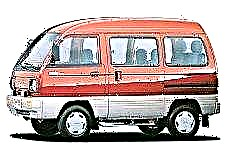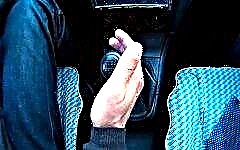

The content of the article:
- Synchronization system
- Forgotten pedal
- High speed start
- Reverse without stopping
- Total control of the clutch pedal
- Wrong gear selection
- Lever control
- Change of oil
Despite the fact that the car is considered to be a single mechanism, all its components can be conditionally divided into two large groups: entourage and base.
The conditional main class includes all mechanisms, components and assemblies that allow the car to drive. The entourage includes those components that are created for the comfort of the driver. And if there is no proper operation of the main systems that provide good speed, then comfort becomes simply unnecessary. Is it only for those connoisseurs of cars who purchase an "iron horse", put it, like a ship, "eternal joke" and admire the beautiful shapes and perfectly working air conditioning in the cabin.
One of the main components of the car is the transmission., on the correct operation of which depends on whether the car will drive on the road, twitch on the road or stand on the same road. How not to kill the manual transmission with your own hands and in a short time?
Synchronization system

Modern cars with manual transmission are equipped with synchronization system, which distinguishes them from rare cars, where there was a "neutral". The work of the system is to equalize the angular velocities of the gears until they mesh. Until the moment, until the alignment of the speeds of the two gears, it is impossible to engage the required gear. But nothing is impossible for our drivers.
This condition of the synchronizer operation is noticeable to every driver; resistance is felt on the lever for some time. This is not a defect in the transmission, it is a condition for the correct operation of the device. Novice drivers push through mechanical resistance and ... break off the teeth on the gears. This principle of work of modern "mechanics" just needs to be remembered.
What else should a driver know so that the gearbox does not "fly away" during the year?
Forgotten pedal

Many drivers turn into blondes when, after many years of operating a car with an automatic transmission, they change to a "mechanic". They just forget to squeeze the clutch when shifting the lever. The result is always the same - the crackle and crunch of a broken gear.
In the best case, the gears "lick", the car can still drive well for some time, but after a few weeks the gearbox breaks down. To make it easier for a beginner to remember and not get confused in the pedals - the left foot is always near the clutch pedal, the right foot only presses not the brake or gas pedal.
High speed start

If you constantly move away from high speeds, the clutch disc burns out, then the flywheel and the clutch basket begin to collapse, the box starts knocking and fails.
The reason why drivers do not start correctly is often due to inattentive training at the driving school. Newbies get used to squeezing the clutch at idle, adding throttle and dropping the clutch pedal. A jerk occurs, and in 90% of cases the car stalls. Future drivers get used to driving revs to the maximum and getting under way without delay.
The following option would be correct:
- Bring the revs up to 1200 - 1500, while the gas pedal goes off a third of its stroke.
- Release the clutch smoothly while increasing throttle.
This will prevent a drop in rpm, save discs and save the gearbox.
Reverse without stopping

A typical mistake of drivers, which is considered almost a classic of the genre. During a sharp turn at speed, when the driver realizes that he may not fit into the corner of the turn, he begins to try to engage the reverse speed, without completing a full stop. The transmission responds to such barbaric movements of the driver with an unambiguous nasty grinding of lubricated gear teeth.
If you practice these cornering approaches often, the reverse gear will soon fail. This threatens that the box will go for overhaul.
Total control of the clutch pedal

A manual transmission cannot offer the driver such comfort as an automatic transmission, where gear shifting depends on the solution of the electronic unit. But only the manual transmission gives the driver full control over the control. All race cars, where the human factor plays a major role, are equipped only with manual transmissions, and they are unlikely to ever be replaced by an automatic transmission.
But despite the fact that the "mechanics" allows the driver to decide for himself what speed to engage, the clutch pedal does not need to be controlled for a long time. We are talking about the habit of drivers to keep the clutch pedal recessed for more than 3-5 seconds. This often happens at traffic lights, in traffic jams.
If the car is on a slope, new drivers feel that by squeezing the clutch all the way, they have more control over the car. These habits will lead to rapid wear and tear of mechanical transmission parts. Drivers should get in the habit of braking and holding the car on an incline with the brake pedal.
Rapid wear of the release bearing and clutch disc occurs. The first sign that a bearing is worn out is the unpleasant hum of the part. There is a risk that it will fall apart on the move. To replace it, you need to remove the gearbox and carry out expensive repairs.
To increase the service life of the gearbox and clutch system, you need to develop the habit of switching the gearbox lever to neutral at any short stops of the car - only in this case it is possible not to release the pedal. In this position, the release bearing does not press on the clutch basket.
Wrong gear selection

During the first months of driving, drivers show the same mistake: driving at low revs with a high gear engaged. This can become a habit, and the driver will shift to higher than third gear at speeds up to 50 km. The box is under heavy load trying to synchronize uncharacteristic parameters.
A second similar mistake, which is already typical for more experienced drivers, is downshifting at high speeds. This is a much more dangerous mistake than driving at low speed in high gear.
Each gear has a maximum speed - if you turn on a low speed, for example 2nd, at a wheel speed corresponding to 4th gear, emergency engine braking will occur. As a result, not only the gearbox may fail, but also the RGM belt may fly off the teeth (or break). This is always a major renovation.
The danger of improper downshifting is not only a failure of the manual transmission. Such actions can lead to uncontrollability of the car on a slippery road. In winter, about 20% of all accidents occur precisely because of this gear change: Speed. Engine braking. Skid. Ditch.
Lever control

Professional drivers almost always keep their right hand on the gear lever, but if you look closely, they do not press on the knob and do not use the handle as an armrest. Beginners grab the handle tightly and press hard on it.
There is a human reflex in case of any loss of balance (on a slippery road, after a jolt, when you stumbled or when turning a car) to grab onto everything that is nearby in order to hold on. When driving, the gearshift lever should oscillate slightly chaotically in response to uneven road surfaces.
When a beginner unconsciously uses a lever as a means of restraint, a gradual loosening of the box occurs. The synchronizer system loses the necessary density, the handle dangles in the box, and this is always an expensive repair, because you have to diagnose the entire transmission and change almost all the gears.
Change of oil

In order for not only the manual transmission to serve for a long time, but also all the power units of the car to work with maximum efficiency, drivers need to constantly monitor the oil level and completely change it once a year. Driving with constant top-up is unacceptable. The nodes become polluted, karst layers are formed and the box can fail due to elementary pollution.
In order for a manual transmission to serve its maximum service life without major repairs, it is required to follow simple rules of driving. But this only comes with experience.











